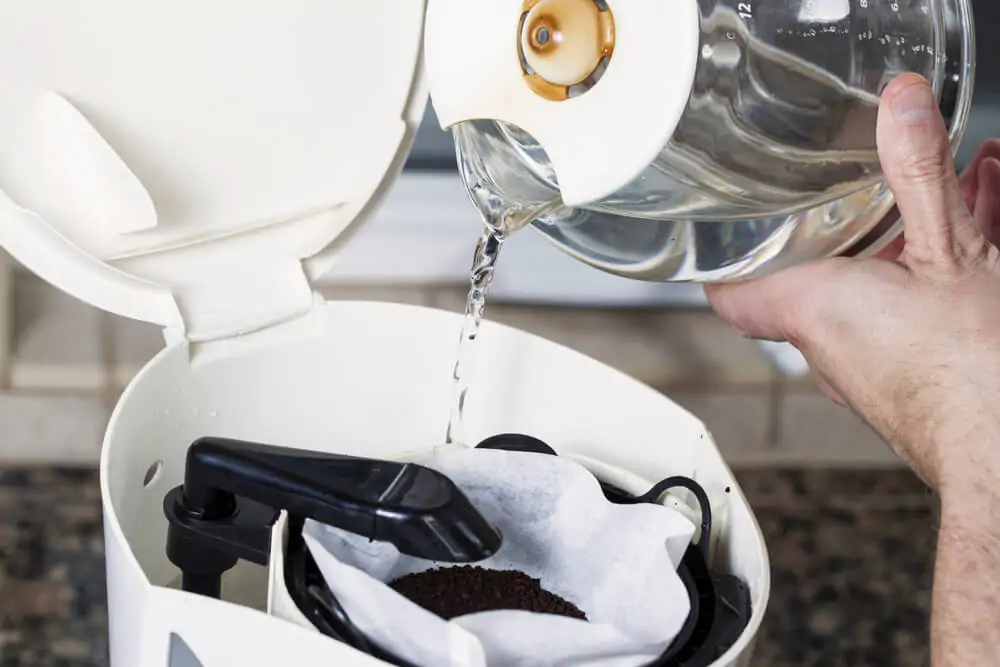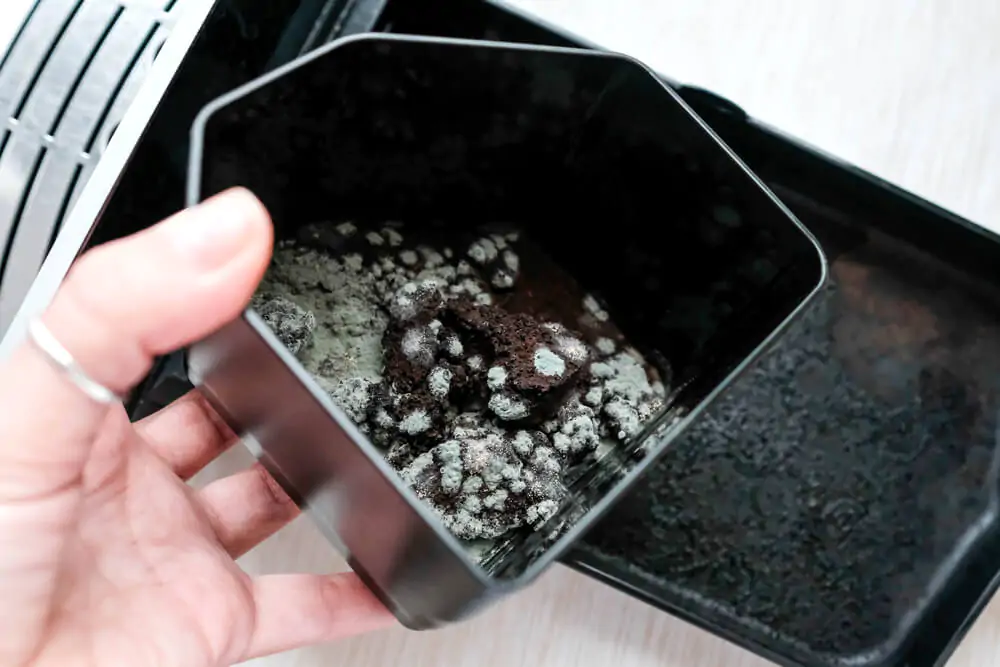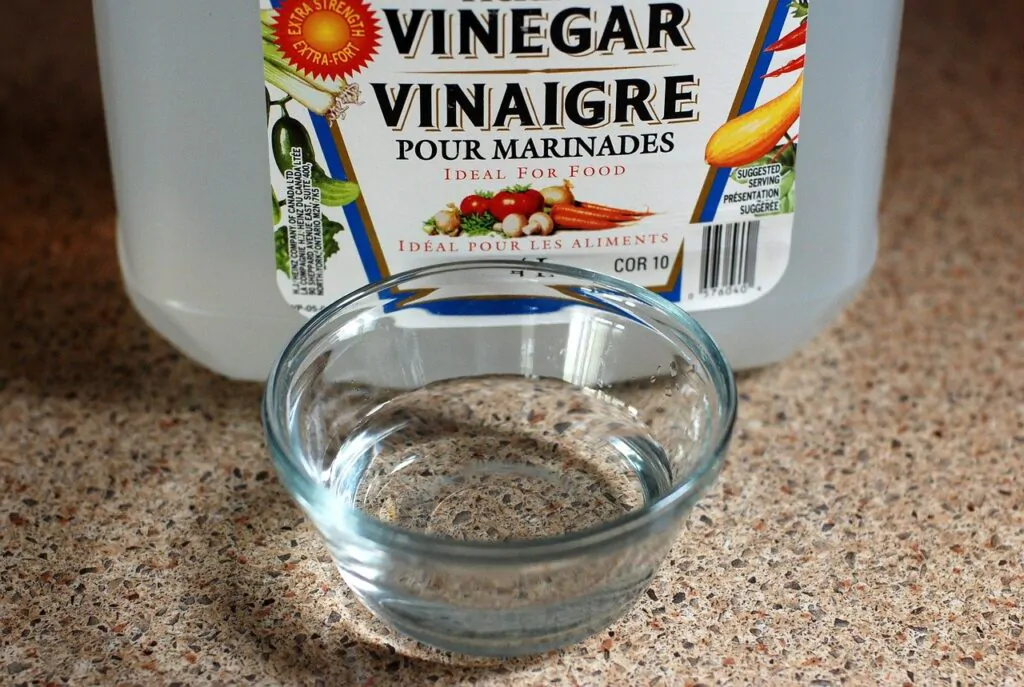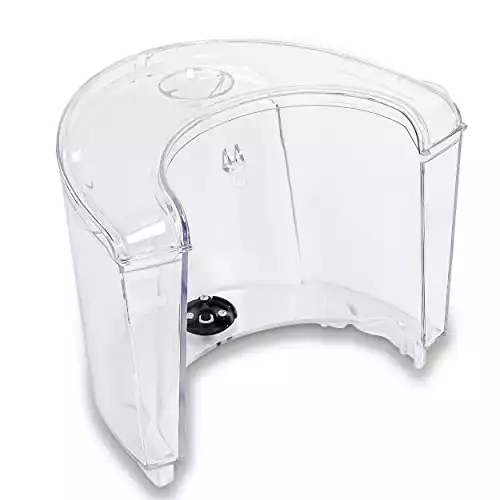Many people leave water in a Keurig water reservoir to avoid the hassle of refilling it when making their morning cup of coffee. Here’s why that’s a bad idea.

When the Keurig coffee maker first became available on the market, it was probably hailed as one of the most brilliant kitchen appliances ever — and why not?
Keurig brewers allow you to make a single cup of coffee from a small pod instead of dealing with messy coffee grounds. Additionally, it comes with a water tank that stores enough water to brew coffee for 3 to 4 days, if all you need is one or two cups of coffee each day.
However, make sure you leave water standing in your Keurig for less than 12 hours. Leaving water in your coffee pot over that time is not advisable.
Keurig’s coffee pods and single-serve brewers offer people the convenience of brewing the perfect cup of joe in under a minute. It also prevents your entire coffee batch from being exposed to air and light.
The large water reservoir prevents the hassle of having to refill it after each cup of coffee. Many people who operate on zombie mode before their morning coffee take advantage of this feature by filling it up the night before so that all they need to do in the morning is press the brew button.
But is that really such a smart thing to do?
Here, we will answer a few questions for you:
- Can you leave water in a Keurig?
- Should you leave water in a Keurig?
- What should you do if you leave water in a Keurig for a long time?
Can You Leave Water In A Keurig?
The answer to this is easy enough. Of course, you can leave water in a Keurig! The Keurig 2.0 water reservoirs can hold anything between 40 and 80 ounces.
With this amount of water, you can make up to 10 cups of coffee, depending on what version you have. Sure, it makes sense to fill the entire reservoir so that you don’t have to repour and reheat water every time you want to make more than one cup (you will still need to place a new K-Cup in the brewer, though).
However, if you don’t want to store water in your Keurig, there is no easy way for you to drain the tank from the inside. You will need to disassemble your coffee maker to take out the reservoir and pour out its contents.
Many people prefer not to go through this hassle and let their water sit in the machine for several days.
Should You Leave Water In A Keurig?
The more important question is, should you leave water in your Keurig? Maybe there is something other than coffee brewing inside.
We know that bacteria like the damp and the dark, and Keurig water containers offer them exactly this kind of environment.
However, this situation is not unique to Keurig coffee makers; in fact, all coffee or any other beverage makers are susceptible to bacterial contamination if they are kept in wet conditions.
Similar studies done by the University of Valencia in Spain and CBS have found that Keurig machines are breeding grounds for several dangerous kinds of bacteria as well as mold. According to the University of Valencia, when they swabbed their coffee maker, they found 35 to 67 different bacterial colonies, including those of staphylococcus, E. coli, streptococcus, pseudomonas aeruginosa, enterobacter, and klebsiella.

Experts believe that much of the bacteria comes from cross-contamination, for example, not washing your hands before filling the water reservoir.
However, that doesn’t mean you should throw out your Keurig and lose out on your morning coffee fix: This issue is not exclusive to Keurig. Any appliance that is subjected to warm and wet conditions will be attacked by bacteria, mold, and algae, and needs to be cleaned regularly.
Having said that, it is probably safe to leave water in your Keurig overnight if you plan to drink the coffee less than 12 hours later. That’s true for water placed out in a pitcher, as well. Additionally, many types of bacteria die at 167 degrees Fahrenheit, so when your Keurig heats up, it probably decontaminates the water.
Still, to be on the safe side, if your Keurig has had water sitting in it for a couple of days, it is best to clean out the reservoir.
What Should You Do If You Leave Water In A Keurig For A Long Time?
If water has been sitting in your Keurig for a long time, you need to remove it and clean the machine. It can be a bit inconvenient to remove the tank from the machine to clean it out, but your safety is paramount. Even Keurig agrees on this.
The coffee machine manufacturer advises on how to maintain your Keurig to keep it contaminant-free:
- Descale it every 3 to 6 months
- The water reservoir should be cleaned every week
- Vinegar can be used to remove build-up
- Run a cleansing brew to remove standing water
- If the machine has not been in use for some time, it should be descaled first
Since Keurig does not come with an internal drain plug, you can clean its reservoir in two ways:
1. Disassembling The Water Tank
The reservoir is connected to an internal pump through a drain pipe. If you can find this pipe, you can plug it, and the water will drain out of the reservoir.
To access this drain hose, you will first need to find out where it is located (different Keurig models may have different locations for this hose). Once you find it, you can remove the screws on the side of the bottom panel to access it.
The drain hose may be secured by a tie, so you will need to cut it to remove it from the fitting. You can then place the end of the hose into a cup and let the water drain out from it. This may take a few minutes, so you need to be patient.
Once your water tank is empty, you can secure the pipe back to its fitting with a cable tie and assemble your coffee machine again.
2. Running A Cleansing Cycle
If you don’t want to go through the hassle of opening up your Keurig and then waiting several minutes for the water to drain out of the tank, you can brew out the excess water.
Simply run the machine without adding a K-Cup, and it will produce a hot cup of water. If your tank is large and has a lot of extra water, you may need to run a brew cycle multiple times to get the water out.
3. Washing Your Water Reservoir
Although using the above methods can help you drain the excess water, you also need to clean out the water tank thoroughly. To remove the water tank, you will need to dismantle your machine completely. Once the tank is in your hand, you can wash it with soapy hot water or a vinegar solution.

Some Keurig models come with water tanks that are dishwasher-friendly, so all you need to do is to place the container in your dishwasher and run a cycle. If your tank is not dishwasher-safe, you can clean it with a mixture of fresh water and white vinegar. Alternately, you can also use a one-fourth cup of baking soda instead of vinegar.
Fill the tank with the solution and let it sit for a few minutes. Use a soft-bristled round-tipped brush to gently scrub the insides of the tank and the water intake hole while rinsing with tap water. This will get rid of any bacteria, limescale, or clogs.
4. Descaling The Coffee Maker
Descaling removes mineral deposits like calcium that can form on the inside of your coffee maker, especially if you have hard water. These deposits can affect the taste of your coffee.
Keurig recommends you descale your machine every three to six months, depending on how much you use it. They offer step-by-step instructions on how to clean out the machine: It recommends you use their Keurig Descaling Solution, but a vinegar or baking soda solution works just as well.
Simply fill your water reservoir with the solution and run multiple brewing cycles to clean out the coffee maker.
The Final Words: How Long Can You Leave Water In A Keurig
Your Keurig machine is not the dirtiest thing in your kitchen (that is probably the kitchen sponges you use to wash the dishes and wipe down the countertops). However, like all standing water, water that is left sitting in your Keurig machines for days on end can become contaminated with bacteria, algae, and mold.
In fact, experts warn that you should not drink water that has been left standing for 12 hours or more — and Keurig is no exception since its warm and wet conditions are the perfect breeding ground for contaminants.
So make sure once your family is done with their coffee, you clear out the excess water by pressing the brew button and running a few cleaning cycles on the machine.
Additionally, wash the water reservoir every week, preferably with vinegar (even though it may seem like a bit of a chore), and run it through a descaling cycle every three to six months.
With the proper upkeep, there is no reason why your Keurig machine won’t give you perfectly delicious (and sanitary) cups of coffee for years to come.
RELATED ARTICLE: Can You Put Milk In A Keurig?

